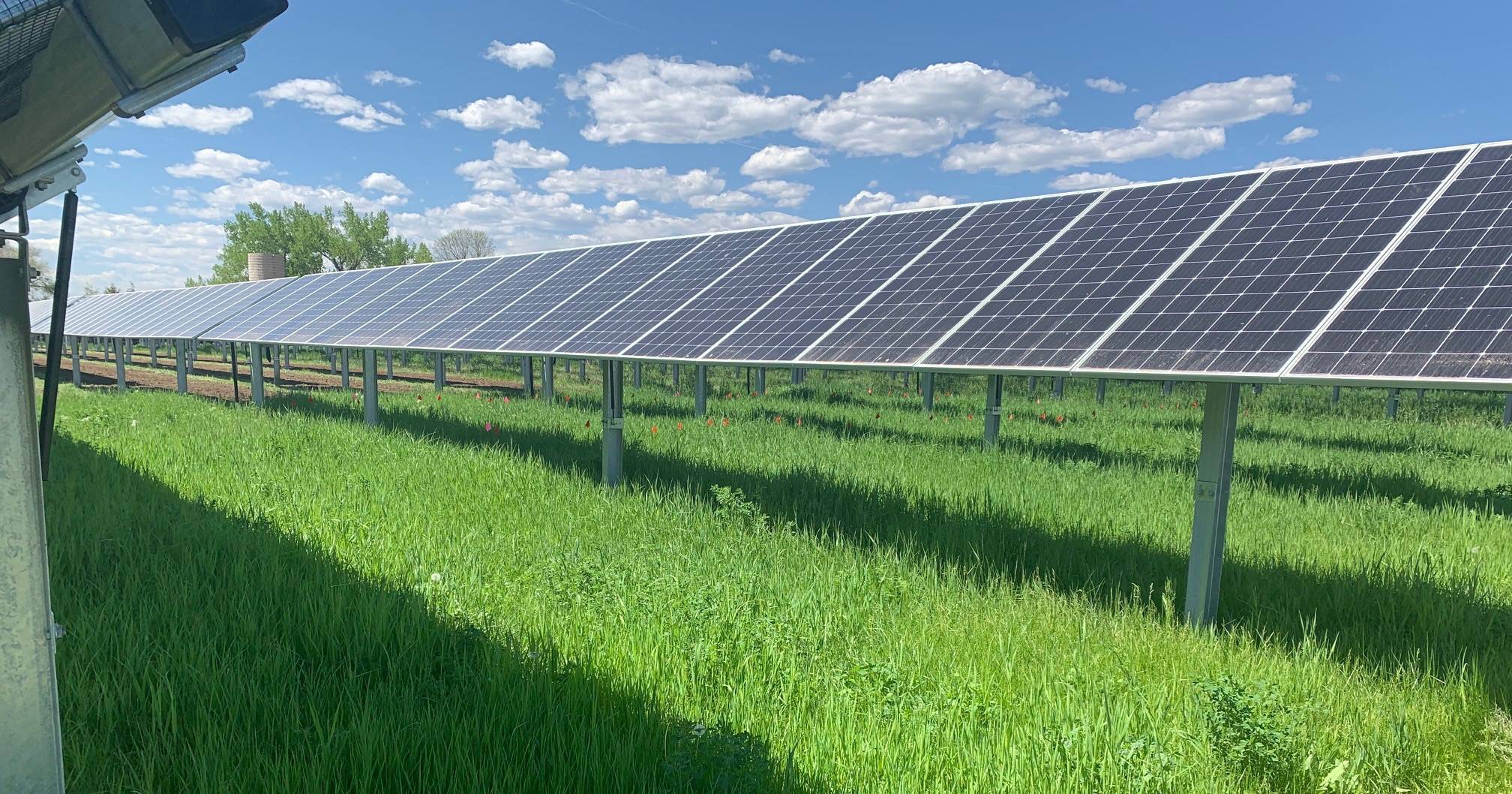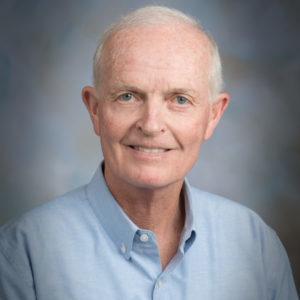
Solar panels for preliminary research on forage grasses at Jack’s Solar Garden near Longmont.
Provided/Alan Knapp
A Colorado State University grassland ecologist is part of a $10 million project to develop optimal designs for “agrivoltaic” systems – fields with crops and solar panels that work together to maintain crop production, produce renewable energy and increase farm profitability.
The four-year project, funded by the U.S. Department of Agriculture’s National Institute of Food and Agriculture Research, includes among its academic partners Alan Knapp, University Distinguished Professor in CSU’s Department of Biology. Beyond serving on the project’s management team, Knapp will oversee the establishment of experimental agrivoltaic solar arrays in Colorado agroecosystems and will lead studies focused on how forage grasses grow in an agrivoltaic setting.
CSU Extension agronomist Ron Meyer is also a CSU collaborator and will oversee the extension and outreach portions of the project.
The project’s lead institution is University of Illinois Urbana-Champaign, and work will include researchers at University of Arizona, Auburn University, the University of Chicago, and the National Renewable Energy Laboratory.
While solar has become more profitable for land use, concerns have arisen that it could cut into food production. Some counties have now prohibited large-scale photovoltaic arrays from replacing agricultural land.

In response to such concerns, the researchers’ experimental agrivoltaic arrays will provide critical data on the effects of photovoltaic panels on the environment, including light, temperature, and soil moisture, as well as physiological responses of plants growing under and adjacent to the panels, Knapp said.
“The goal is to collect these data across a range of climates, for multiple crop and forage species, and for different types of agricultural management,” Knapp said. “The latter will include rainfed agriculture in Illinois, dryland agriculture in Colorado, and irrigated agriculture in Arizona.”
These data will be used to design agrivoltaic systems with the optimal panel spacing and orientation necessary to maintain, or even increase, agricultural productivity for different types of crop and forage species in different regions of the country. If agricultural yields can be maintained within these systems, then the generation of renewable energy combined with new revenue for landowners will provide both economic and environmental benefits for Colorado and beyond, Knapp continued.
Said Madhu Khanna, project lead at the University of Illinois Urbana-Champaign: “Our proposed project for Sustainably Co-locating Agricultural and Photovoltaic Electricity Systems (SCAPES) will provide a comprehensive analysis of the transformative potential of agrivoltaics. Our goal is to maintain or even increase crop yield, increase the combined (food and electricity) productivity of land, and diversify and increase farmers’ profits with row crops, forage, and specialty crops across a range of environments.”
More information: sustainability.illinois.edu/research/agrivoltaics-project
The Department of Biology is in the CSU College of Natural Sciences.